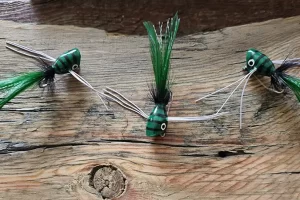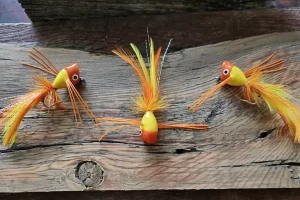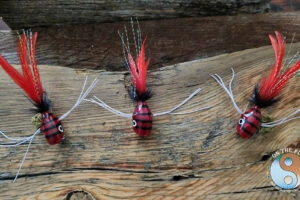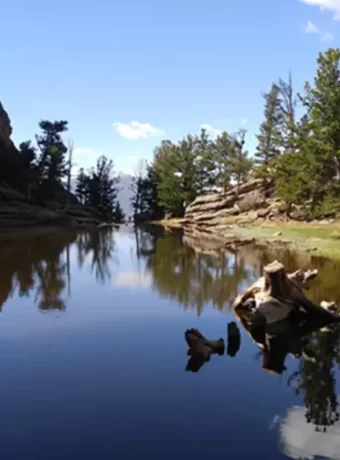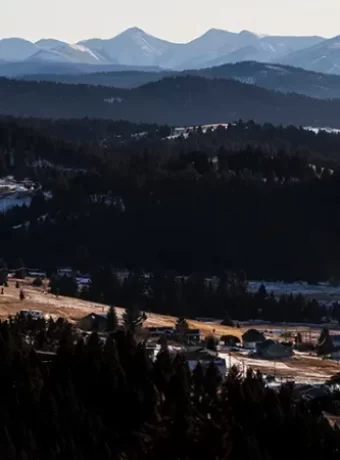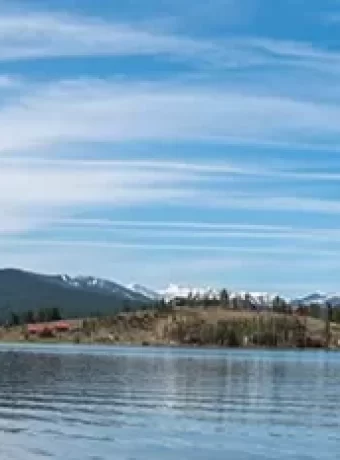Discover the Best Bass Lakes in Indiana for Fly Fishing
Indiana might be known for basketball and cornfields, but anglers know better. The Hoosier state holds some incredible bass fishing waters, perfect for fly fishing. Chasing largemouth and smallmouth bass with a fly rod offers a special kind of thrill. Go for a bass excursion with Best Bass Lakes in Indiana for Fly Fishing.
You feel every head shake, every powerful run. You’ll learn about the Ten Best Bass Lakes in Indiana for Fly Fishing right here. These waters provide outstanding fishing opportunities.
From sprawling reservoirs in southern Indiana to clear natural lakes up north near Lake Michigan, opportunities abound. Each spot presents its own challenges and rewards. Get ready to explore some of the finest bass waters Indiana offers; let’s uncover the Best Bass Lakes in Indiana for Fly Fishing.
Table of Contents
Lake Monroe
Let’s start with the giant. Lake Monroe is Indiana’s largest inland lake, a sprawling 10,750-acre playground near Bloomington in southern Indiana. It’s primarily known for its healthy population of largemouth bass, but you might hook into a smallmouth bass or even a hybrid striped bass now and again.
Overview of Lake Monroe
This southern Indiana gem boasts diverse habitats managed by the Indiana Department of Natural Resources. You’ll find submerged timber, sprawling weed beds, winding creek channels, and quiet coves. These features create perfect ambush spots for hungry bass fish.
The sheer size means you can always find a new spot to explore, making it a popular destination for outdoor family fun. Numerous boat ramp locations provide easy access around the lake. It stands as one of Indiana’s big water fishing destinations.
How to Fly Fish Lake Monroe
Focus your efforts around structure. Coves, creek channel edges, and areas thick with submerged timber or brush piles are prime locations. Early mornings and late evenings are magic hours for topwater action near the shorelines.
The calmer water lets those poppers really draw attention. Try using a slow, steady retrieve with streamers if you’re imitating shad or bluegill in deeper water along points or drop-offs. For surface action, work poppers with short, sharp strips, creating a commotion bass hiding nearby find hard to resist.
Gear Suggestions
A solid 9-foot, 6-weight fly rod is a great all-around choice here. It gives you enough backbone to cast larger flies and handle bigger bass fish. Pair it with a weight-forward floating line for versatility, though a sink-tip can be useful for probing deeper structure.
Recommended Flies and How to Use Them
- Woolly Bugger (Black or Olive, Size 6-8): This fly is a classic for a reason; it imitates leeches or small baitfish, which bass love. Cast it near submerged timber and let it sink a couple of feet. Use a slow, steady strip, pausing now and then to look like wounded prey.
- Deer Hair Popper (Yellow or White, Size 4-6): These create fantastic surface disturbance, calling bass out from cover. Cast near weed edges or logs. Strip sharply to make it ‘pop’, then pause for 3-5 seconds. Be ready for an explosive strike during the pause.
Lake Monroe Tips
Hit the water during the spring spawn (usually April-May) when bass move into shallower areas. They become more accessible and aggressive during this prime time, sometimes referred to as the Great American Spring fishing period. Keep an eye on the weather; because Monroe is so big, windy days can make for rough, choppy conditions that are tough to fish effectively.
Indiana Bass have an Attraction to Clouser Minnows
Outfitted in Performance Outdoor Apparel can make the difference from an uncomfortable day to a perfect day. Take the Salmonfly Graphic Hoodie for instance, built in facemask, thumb cuffs, and a UPF-50 Sun Protection.
One of my favorite baitfish patterns is a Clouser Minnow. Rabbit Clouser Minnows offer lots of great action.
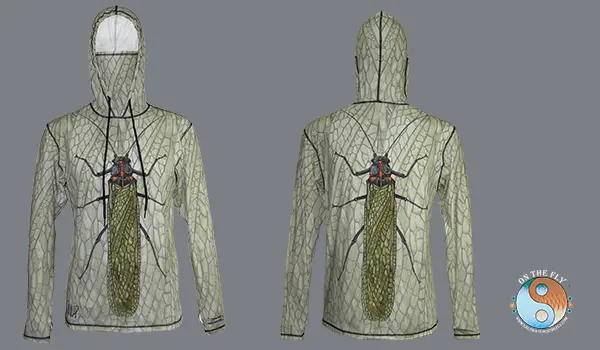
Patoka Lake
Head further south, near Jasper and French Lick, and you’ll find Patoka Lake. At 8,800 acres, it’s another substantial body of water known for excellent largemouth bass fishing. Its largely undeveloped shoreline, much of it within the Patoka Lake Wildlife Area, adds to the appeal for anglers seeking natural beauty.
Overview of Patoka Lake
Patoka is characterized by its rugged shoreline and abundant underwater structure. Submerged timber, lily pads, and brush piles are everywhere. This cover-rich environment helps largemouth bass thrive, making it a top pick for fly anglers seeking quality fish in southern Indiana.
Managed by the Indiana Department of Natural Resources, it’s known as a great place for serious anglers and provides fantastic fishing opportunities. It’s consistently ranked among the state’s best bass lakes. The lake record largemouth reflects the potential for big bass here.
How to Fly Fish Patoka Lake
Concentrate on timber edges, clusters of lily pads, and shallow flats near deeper drop-offs. Bass use these transition zones frequently. Fishing weedless flies through thick cover often pays off, requiring patience and a slow retrieve.
During low-light periods (early morning and late evening), poppers worked along weed lines or through timber fields can be deadly. Listen for the tell-tale ‘slurp’ or explosive strike of a bass inhaling your fly. This lake is a perfect place to hone your casting accuracy around heavy cover.
Gear Suggestions
A 5- or 6-weight rod with a floating line works beautifully on Patoka Lake. It lets you cast accurately around timber and delicately present flies near lily pads. Accuracy is often more important than distance here, especially when targeting specific pieces of structure.
Recommended Flies and How to Use Them
- Weedless Frog Fly (Green, Size 6): Frogs are a natural food source for bass in weedy areas. Cast this fly right into lily pads or near standing timber. Use short, twitchy strips to mimic a frog hopping, pausing frequently to tempt a strike.
- Clouser Minnow (Chartreuse/White, Size 6-8): This fly effectively imitates shad or other small baitfish. Cast it near drop-offs or points. Retrieve with a fast, erratic stripping action to trigger aggressive reaction strikes from bass fish.
Patoka Lake Tips
Early summer, particularly June, is a fantastic time for topwater action. The warm water has bass actively feeding. Launching from the Painter Creek boat ramp gives easy access to some of the lake’s prime fishing areas and nearby sections of the Patoka Lake Wildlife Area.
Fly Fishing, Hiking, Mountain Biking Montana
Take an excursion to Montana for Trout to Muskie. Central Montana Vacation Rental.
Casting streamers for bass you will need a good pair of fly fishing gloves with a stripping guard for those days. Gloves are a UPF-50 sun protection.

Geist Reservoir
Just northeast of Indianapolis, Geist Reservoir offers fantastic bass fishing close to the city. This 1,890-acre impoundment has a strong reputation for producing trophy largemouth bass. It gets busy, especially on summer weekends, but the fishing can be worth navigating the boat traffic.
Overview of Geist Reservoir
Geist is a developed reservoir, meaning abundant boat docks, marinas, and seawalls provide structure. There are also submerged brush piles placed by the DNR and local anglers, along with points and old creek channels to explore. This artificial cover holds plenty of bass throughout the year, especially largemouth bass.
Its proximity to the city makes it a popular spot, contrasting with the more remote feel of lakes in southern Indiana. Fishing pressure can be high, rewarding anglers who find less obvious spots or fish during off-peak times. The reservoir impounds Fall Creek, a tributary of the White River.
How to Fly Fish Geist Reservoir
Target areas around boat docks, under pontoons, near marina structures, and submerged brush piles. Bass love the shade and ambush opportunities these spots give. Try streamers with a stop-and-go retrieve to mimic baitfish darting in and out of cover.
Don’t forget the bottom. Crayfish patterns fished slowly along rocky bottoms or near riprap can entice big bass, especially in warmer months. Skipping flies under docks requires practice but can reach fish others miss.
Gear Suggestions
A 6-weight rod gives you versatility for casting various fly sizes and managing bass around dock posts. Consider using a sinking tip line or a full sinking line. This helps get your flies down deep under docks or along drop-offs where bigger bass often lurk, especially during midday.
Recommended Flies and How to Use Them
- Muddler Minnow (Brown, Size 6-8): This buggy fly resembles sculpins or small baitfish hiding near docks and rocks. Cast it tight to structure, let it sink a bit. Retrieve with short, quick strips to simulate a fleeing minnow.
- Crayfish Pattern (Olive or Brown, Size 8): Bass munch crayfish along rocky shorelines and points. Let this fly sink to the bottom. Use slow, deliberate strips, bouncing it along the rocks like a real crawdad.
Geist Reservoir Tips
Fall (September through October) is often considered peak season for targeting larger bass on Geist. They feed heavily before winter. Using a kayak or float tube can be a great way to work the tight spaces around docks and marinas that larger boats struggle to reach effectively.
Lake Lemon
Nestled in the rolling hills near Bloomington, Lake Lemon is a 1,650-acre gem. Its relatively clear water and varied habitat make it a favorite among central Indiana fly anglers. It offers a more manageable fishing experience than the giant reservoirs found further south.
Overview of Lake Lemon
Lake Lemon features clearer water compared to many reservoirs (especially outside of heavy rains), submerged vegetation like milfoil and coontail, and distinct rocky points. This mix provides excellent habitat for largemouth bass. Its manageable size makes it easier to explore thoroughly in a single trip, making it a good choice for family fun.
Owned by the City of Bloomington, it has specific boating and access regulations, so check those before heading out. Riddle Point Park offers a public boat ramp and beach area. The surrounding area offers typical southern Indiana scenery.
How to Fly Fish Lake Lemon
Target weed beds, rocky points, and shallow flats, particularly near drop-offs. The clear water sometimes allows for sight fishing opportunities. Look for cruising bass in the shallows on calm, sunny days, especially during the spring spawn.
Use small streamers fished near vegetation edges. A quick retrieve can trigger strikes. If sight fishing, carefully present nymphs or small subsurface patterns ahead of visible bass without spooking them; stealth is important here.
Gear Suggestions
A lighter setup, like a 4- or 5-weight rod with a floating line, is ideal here. It allows for delicate presentations and makes fighting average-sized bass more fun. Using longer, thinner leaders (like fluorocarbon) can help fool fish in the clearer water.
Recommended Flies and How to Use Them
- Pheasant Tail Nymph (Size 10-12): This classic nymph pattern imitates various small aquatic insects that bass feed on, especially in clearer water. Cast to visible bass or likely looking spots in the shallows. Let it sink naturally, then impart small twitches.
- Zonker Streamer (White, Size 8): A great small baitfish imitation for fishing around weed beds. Strip it quickly through or along the edges of vegetation. Occasional pauses can trigger followers into striking.
Lake Lemon Tips
Spring offers the best sight-fishing opportunities as bass move shallow to spawn. Good polarized sunglasses are essential for spotting fish in the clear water. They cut through the surface glare, revealing hidden bass cruising the flats or sitting on beds.
Lake Lemon
Nestled in the rolling hills near Bloomington, Lake Lemon is a 1,650-acre gem. Its relatively clear water and varied habitat make it a favorite among central Indiana fly anglers. It offers a more manageable fishing experience than the giant reservoirs found further south.
Overview of Lake Lemon
Lake Lemon features clearer water compared to many reservoirs (especially outside of heavy rains), submerged vegetation like milfoil and coontail, and distinct rocky points. This mix provides excellent habitat for largemouth bass. Its manageable size makes it easier to explore thoroughly in a single trip, making it a good choice for family fun.
Owned by the City of Bloomington, it has specific boating and access regulations, so check those before heading out. Riddle Point Park offers a public boat ramp and beach area. The surrounding area offers typical southern Indiana scenery.
How to Fly Fish Lake Lemon
Target weed beds, rocky points, and shallow flats, particularly near drop-offs. The clear water sometimes allows for sight fishing opportunities. Look for cruising bass in the shallows on calm, sunny days, especially during the spring spawn.
Use small streamers fished near vegetation edges. A quick retrieve can trigger strikes. If sight fishing, carefully present nymphs or small subsurface patterns ahead of visible bass without spooking them; stealth is important here.
Gear Suggestions
A lighter setup, like a 4- or 5-weight rod with a floating line, is ideal here. It allows for delicate presentations and makes fighting average-sized bass more fun. Using longer, thinner leaders (like fluorocarbon) can help fool fish in the clearer water.
Recommended Flies and How to Use Them
- Pheasant Tail Nymph (Size 10-12): This classic nymph pattern imitates various small aquatic insects that bass feed on, especially in clearer water. Cast to visible bass or likely looking spots in the shallows. Let it sink naturally, then impart small twitches.
- Zonker Streamer (White, Size 8): A great small baitfish imitation for fishing around weed beds. Strip it quickly through or along the edges of vegetation. Occasional pauses can trigger followers into striking.
Lake Lemon Tips
Spring offers the best sight-fishing opportunities as bass move shallow to spawn. Good polarized sunglasses are essential for spotting fish in the clear water. They cut through the surface glare, revealing hidden bass cruising the flats or sitting on beds.
Lake Manitou
Up in north-central Indiana near Rochester sits Lake Manitou. This 775-acre natural lake provides a nice change of pace from the larger reservoirs. It has a good mix of shallow flats and deeper channels, plus a healthy bluegill population that fattens up the local largemouth bass.
Overview of Lake Manitou
Manitou offers varied structure including shallow weedy flats, emergent vegetation like lily pads, and deeper channels cutting through the lake basin. Its abundant bluegill population serves as a primary forage base for largemouth bass. It’s often less crowded than the larger reservoirs, offering a more relaxed fishing experience in north-central Indiana.
As one of Indiana’s many natural lakes formed by glaciers, it has a different character than man-made impoundments. Access is available via a public boat ramp. It’s situated not far from the Tippecanoe River system.
How to Fly Fish Lake Manitou
Focus on the shallow flats, especially where weeds are present, during dawn and dusk. This is prime time for topwater action with poppers and sliders. During brighter parts of the day, target the edges of deeper channels or drop-offs with subsurface flies like streamers or leech patterns.
Vary your retrieve until you figure out what the bass want. Sometimes a steady retrieve works, other times pauses or erratic strips are needed. Casting accuracy near pad fields or docks is beneficial.
Gear Suggestions
A 5-weight rod paired with a weight-forward floating line is a versatile setup for Lake Manitou. It handles typical bass flies well and is light enough for enjoyable casting all day. You likely won’t need sinking lines unless targeting the deepest channel areas consistently.
Recommended Flies and How to Use Them
- Foam Popper (Bluegill Pattern, Size 6): Mimicking the local forage is always a good strategy. Cast this popper near weed edges or openings in lily pads. Use a distinct popping retrieve with pauses to imitate a struggling bluegill.
- Bunny Clouser Minnow (Black, Size 8-4): This fly has incredible movement in the water, mimicking leeches or small fish. Fish it near channel drop-offs or along deeper weed lines. Use long, slow strips followed by pauses to simulate natural movement.
Lake Manitou Tips
Summer evenings are often the best time for exciting topwater action as the lake calms down. Access is straightforward via the public boat ramp located off State Road 14. It’s a great lake for a relaxed day of fishing or combining with exploration of the nearby Tippecanoe River.

A good all around fly rod for bass down through trout and panfish is a nine foot six weight fly rod.
In Crawfish Patterns work at time when others don’t.
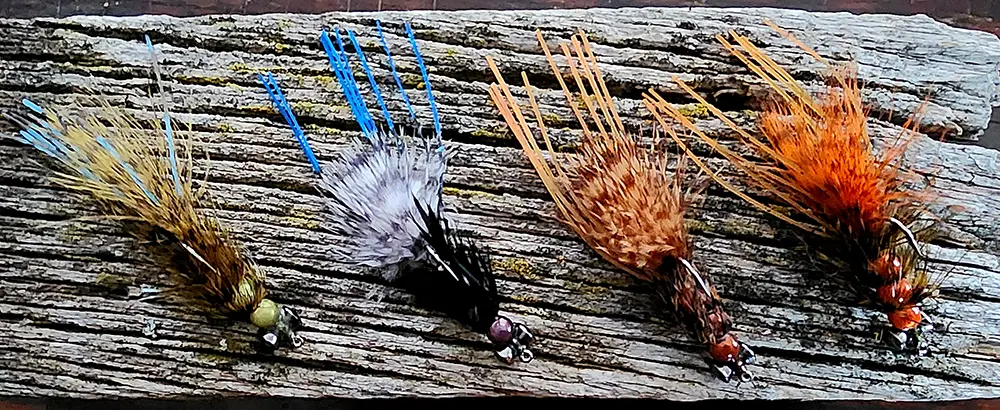
Indiana Bass Snack on Crawfish
Exploring the Northern Gems: Maxinkuckee and Wawasee
Indiana’s northern region, not far from South Bend and the shores of Lake Michigan, boasts some beautiful natural lakes. Two standouts for fly fishing bass are Lake Maxinkuckee and Lake Wawasee. These clear lakes offer classic glacial lake structure and excellent fishing opportunities.
Lake Maxinkuckee
Near Culver in northern Indiana, Lake Maxinkuckee is the state’s second-largest natural lake at 1,864 acres. Its exceptionally clear water and healthy ecosystem make it a prime destination. It’s known for both quality largemouth bass and bragging-size bluegill, providing great fishing variety.
Overview of Lake Maxinkuckee
Maxinkuckee features clear water, extensive weed beds (coontail, milfoil), lily pads, and submerged logs. The clarity allows vegetation to grow deeper than in many other Indiana lakes. This provides ample habitat for largemouth bass throughout the water column, making it a perfect place for anglers who enjoy fishing vegetation.
Located in Marshall County, its clear nature sometimes requires techniques more akin to fishing small streams or stream trout waters. The Culver Academies border part of the shoreline. It’s a true gem among Northern Indiana natural lakes.
How to Fly Fish Lake Maxinkuckee
Target the edges of weed lines, pockets within lily pads, and any visible submerged logs or structures. Because the water is clear, long casts and stealthy approaches are often helpful. Topwater flies work well near shorelines and over weeds in low light, but subtle presentations may be needed.
Fishing weedless flies allows you to penetrate thicker grass beds where bass hide. Use poppers or gurglers along weed edges during morning and evening. Small streamers imitating perch or bluegill can be effective along deeper weed lines during the day.
Gear Suggestions
A 6-weight Fly Rod with a floating line is a good choice. It can handle potentially windy conditions often found on larger natural lakes and cast slightly larger or more wind-resistant flies. Using fluorocarbon leaders might offer an advantage in the exceptionally clear water.
Recommended Flies and How to Use Them
- Weedless Streamer (Olive, Size 6-8): Designed to navigate through thick vegetation without snagging. Cast it deep into weed beds. Retrieve with short, jerky strips to make it dart through the grass like fleeing baitfish.
- Gurgler (White or Black, Size 6-4): Creates a more subtle surface disturbance than a popper, often effective on calmer days or for pressured fish in clear water. Skitter it across the surface near weeds or structure using quick, continuous strips.
Lake Maxinkuckee Tips
Fall can be an excellent time as bass move shallower and feed aggressively before winter sets in. Water clarity often peaks during this season as well. Renting a boat from Culver Marina provides full access to explore the entire lake effectively, though public access points exist.
Lake Wawasee
Located near Syracuse in Kosciusko County, Lake Wawasee is Indiana’s largest natural lake, covering 3,410 acres. It’s a bustling lake in the summer but offers fantastic largemouth bass fishing. Its size and diverse structure give fly anglers plenty of water to cover in Northern Indiana.
Overview of Lake Wawasee
Wawasee boasts numerous weed beds, secluded coves, channels connecting different basins (like Johnson Bay), and submerged structures like logs and man-made fish attractors. The lake has distinct basins, including the outlet which forms the Yellow River. It’s a very popular recreational lake, so weekdays or early/late hours are best for avoiding heavy boat traffic during peak season.
Connected Syracuse Lake adds even more water to explore. This large system provides diverse fishing opportunities, from shallow pads to deeper offshore structure. Multiple boat ramp options are available around the lake.
How to Fly Fish Lake Wawasee
Focus on weed bed edges, especially where different types of vegetation meet (inside and outside turns are key). Explore the backs of coves and cast near docks and submerged logs, paying attention to shade lines. Early morning topwater action can be phenomenal before the lake gets busy with recreational boaters.
Use topwater flies like poppers and frogs in the shallows, especially around lily pads and docks. Switch to streamers or crayfish patterns when probing deeper water along weed lines or near channel drop-offs where bass may retreat during midday.
Gear Suggestions
A versatile 6-weight rod with a floating line is ideal for Wawasee. It handles various fly sizes and helps manage fish around cover like docks and thick weeds. A reel with a decent drag system is helpful for controlling larger bass that Wawasee can produce.
Recommended Flies and How to Use Them
- Deer Hair/Foam Poppers (Black or Frog Pattern, Size 6-1\0): Excellent for triggering explosive strikes in shallow, weedy areas or near docks. Pop it aggressively along weed edges or near cover, using long pauses between strips where bass often strike.
- Zonker Streamer (Chartreuse or White, Size 8): A good choice for mimicking baitfish like shad or perch in slightly deeper zones along weed lines or drop-offs. Use an erratic retrieve with strips and pauses to imitate a struggling fish.
Lake Wawasee Tips
Summer evenings, after the recreational boaters have largely left the water, can offer superb topwater fishing opportunities. Using a boat is almost essential to explore Wawasee effectively due to its size and numerous coves. Public access points like the one at N Waco Drive provide launch facilities.
Turtle Creek Reservoir
Situated in western Indiana near Terre Haute and the Wabash River, Turtle Creek Reservoir is a 1,500-acre lake originally built for power plant cooling. After experiencing some ecological challenges including a potential bass crash decades ago, its bass fishery has rebounded well thanks to management efforts. It now offers solitude and solid fly fishing opportunities.
Overview of Turtle Creek Reservoir
Turtle Creek features a mix of shallow flats and deeper water, along with structure like submerged road beds and creek channels. The warmer water discharge area (when the Merom Generating Station was fully operational) could attract fish in cooler months, though this effect may change with plant status. It’s generally less pressured than some other major lakes, providing a quieter experience than reservoirs like Monroe or Patoka Lake.
The surrounding area often feels like a wildlife area. Its location near the Illinois border makes it accessible for anglers from both states. Checking current regulations via the Indiana Department of Natural Resources is important.
How to Fly Fish Turtle Creek Reservoir
Focus your efforts on submerged road beds, points extending into the lake, and the edges of deeper channels. Look for baitfish activity, as bass will often follow schools of shad. Standard bass fly fishing techniques work well here; covering water is often key.
Use streamers, like Clouser Minnows or Woolly Buggers, fished along drop-offs or over submerged structure. A sinking tip line can help reach deeper bass holding on points or channel edges. Nymphs or smaller subsurface flies can be effective near the shorelines or on flats.
Gear Suggestions
A 6-weight rod is appropriate for Turtle Creek. Given the potential need to fish deeper structure, having a sinking tip or full sinking line option in your fishing gear collection is recommended. A floating line still works for shallower presentations or topwater action during low light.
Recommended Flies and How to Use Them
- Conehead Streamer (Black or Olive, Size 8): The conehead helps the fly sink quickly to reach bass holding on deeper structure or drop-offs. Cast towards the structure and retrieve with a steady strip-pause-strip action to mimic baitfish movement.
- Hare’s Ear Nymph (Size 10): A good general imitation for small aquatic life found in shallower zones or along weed edges. Drift it near shorelines under an indicator or fish it with subtle twitches on a floating line when bass are less aggressive.
Turtle Creek Reservoir Tips
Spring and fall generally offer the most consistent fishing action as water temperatures are favorable. Because it’s less crowded than many other lakes, it’s a perfect destination if you’re seeking a quiet day on the water. Always check Indiana DNR regulations for specific rules and any consumption advisories.
Hardy Lake
Hardy Lake, located near Scottsburg in southeastern Indiana, is the state’s only reservoir not built for flood control, meaning water levels are generally more stable. This 741-acre lake is part of a State Recreation Area. Its compact size and good bass habitat make it a great choice for fly anglers looking for accessible fishing.
Overview of Hardy Lake
Hardy Lake features abundant submerged timber, numerous weed beds, and relatively clear water compared to nearby Ohio River backwaters. The lake is well-managed by the Indiana Department of Natural Resources for fishing and recreation. Its smaller size makes it easy to navigate and learn the productive spots quickly, perfect for outdoor family fun.
The surrounding state recreation area offers camping and other amenities, making it a great place for a weekend trip. It provides a different experience than fishing larger river runs or massive reservoirs.
How to Fly Fish Hardy Lake
Target areas around submerged timber (standing and fallen trees), points extending into the lake, and the edges of weed beds. These classic bass-holding spots produce consistently. Shallow bays and coves can be productive early and late in the day, especially for topwater presentations.
Use poppers and sliders in the shallows, especially near cover, during low-light periods. Switch to streamers or crayfish patterns when fishing deeper timber or along weed lines during the day. Don’t overlook fishing parallel to the shorelines.
Gear Suggestions
A 5-weight rod with a floating line is generally sufficient for Hardy Lake. It handles most bass flies well and makes fishing enjoyable. Waders can be useful for shore anglers looking to explore certain areas more effectively or launch small watercraft like kayaks.
Recommended Flies and How to Use Them
- Foam Popper (Green or Yellow, Size 6): Effective for drawing bass out of weed beds or from under timber. Cast tight to cover. Pop it along weed edges or near logs, using pauses to tempt strikes.
- Clouser Deep Minnow (Olive/White, Size 8): A go-to streamer for targeting bass holding a bit deeper near timber or drop-offs. Use a quick stripping retrieve to trigger reaction strikes from potentially less active fish.
Hardy Lake Tips
Consider camping onsite at the state recreation area for a multi-day fishing trip, allowing you to take advantage of prime early morning and late evening bites. Early mornings often provide the best topwater opportunities before the sun gets high. Shoreline access is decent in several areas around the lake.
Brookville Lake
In southeastern Indiana near the town of Brookville lies Brookville Lake. This 5,200-acre reservoir, located in east-central Indiana near the Ohio border, is noteworthy on this list because it offers excellent fishing for both largemouth and smallmouth bass. It’s also known for walleye, striped bass, and even has occasional reports of spotted bass or flathead catfish being caught.
Overview of Brookville Lake
Brookville features steep, rocky shorelines, numerous points, areas of flooded timber (especially in the upper lake arms like near the East Fork White River inlet), and generally clear water. This combination creates ideal habitat for bass smallmouth along the rocks and largemouth bass in the timbered sections and coves. The tailwater below the dam is also a popular spot, known for periodic stockings of rainbow trout and stream trout.
Managed by the US Army Corps of Engineers and the Indiana Department of Natural Resources, the surrounding land includes the Brookville Lake Wildlife Area. Its dual bass fishery makes it a popular destination for anglers seeking variety.
How to Fly Fish Brookville Lake
For smallmouth bass, focus on rocky points, bluffs, riprap along the dam, and main lake shorelines, especially where there’s wind creating a chop. For largemouth bass, target the flooded timber, coves, and shallower flats with weed cover. Adapt your approach based on the species you’re primarily targeting.
Bounce crayfish flies along rocky bottoms for smallmouth; this is often the most effective tactic. Use streamers like Woolly Buggers or Clousers retrieved near timber or along drop-offs for largemouth. Topwater flies can work for both species early and late in the day, especially during the summer months.
Gear Suggestions
A 6-weight rod is a good all-around choice for Brookville Lake, handling flies for both species. A sinking tip line is highly recommended, especially for effectively fishing crayfish patterns for smallmouth bass along the bottom on rocky points and slopes. Keep appropriate fishing gear for both species.
Recommended Flies and How to Use Them
- Crayfish Fly (Brown or Olive, Size 8): Smallmouth bass key in on crayfish along rocky structures. Cast near rocks, let the fly sink. Use short, sharp strips followed by pauses to mimic a fleeing or defensive crayfish scuttling along the bottom.
- Woolly Bugger (Olive or Black, Size 6-8): A versatile fly effective for largemouth in timbered areas or smallmouth holding slightly deeper off points. Strip it near structure with occasional pauses to suggest vulnerability.
Brookville Lake Tips
Fall is considered prime time for smallmouth bass fishing on Brookville as they feed heavily before winter. Launching from the Hanna Creek boat ramp gives good access to some of the better rocky, smallmouth-holding areas on the main lake body. Don’t neglect the upper arms for largemouth action amidst the timber.
Planning Your Indiana DIY Fly Fishing Trip
Ready to hit the water? A little planning goes a long way for a successful do-it-yourself Indiana fly fishing trip. Here’s what you need to consider before exploring these bass fishing hotspots.
Licensing
Make sure you have a valid Indiana fishing license. An annual resident license typically costs around $23 (as of recent checks, confirm current price). Non-residents can expect to pay more for annual or short-term licenses. Licenses are easily purchased online via the Indiana Department of Natural Resources (DNR) website or at many bait shops and sporting goods stores.
Gear Recommendations
A versatile fly rod is important. For most Indiana bass lakes, a 9-foot, 5- or 6-weight rod is perfect. Pair it with a weight-forward floating line as your primary setup.
Having an extra spool with a sinking tip line (or carrying a full sinking line) is very helpful for fishing deeper structure, especially on lakes like Geist, Turtle Creek, and Brookville Lake. Stock your fly box with essentials: Woolly Buggers, Clouser Minnows, poppers, frog patterns, crayfish imitations, and maybe some nymphs in sizes 4 through 12. Your fishing gear should also include polarized sunglasses, potentially waders, a landing net, leaders, tippet, nippers, and forceps.
Best Times to Fish
Spring (April-May) is fantastic as bass move shallow for the spawn, making them aggressive and accessible – a great time often called the American Spring peak. Fall (September-October) is another prime time, with cooler warm water temps triggering heavy feeding before winter. Summer fishing is good too, but often requires focusing on early mornings, late evenings, or probing deeper water during midday heat.
Daily, dawn and dusk are almost always the best periods for topwater action. During midday, bass often move deeper or tuck into thick cover like timber or dense weeds, requiring subsurface presentations with streamers or jigs. Checking local fishing reports can provide timely information.
Regulations
Always check the current Indiana fishing regulations before heading out, available on the Indiana DNR website or app. Bass limits typically allow keeping 5 fish per day in aggregate (largemouth, smallmouth, spotted bass). There are minimum size limits, usually 14 inches statewide for largemouth and smallmouth bass on lakes, but these can vary by waterbody (e.g., Ohio River regulations differ). Check the official Indiana DNR fishing guide for lake-specific rules, potential slot limits, or special regulations.
Catch-and-release is strongly encouraged by many anglers, especially for larger breeding-size fish, to help maintain healthy populations and preserve the quality of these fisheries for the future. Handle fish carefully and release them quickly.
Access and Accommodations
Most lakes on this list offer good public access via well-maintained boat ramps. Many also have some degree of shoreline fishing access, particularly within state parks or recreation areas. State Recreation Areas like Monroe, Patoka, Hardy, and Brookville offer excellent camping facilities and other amenities, making them ideal for outdoor family fun.
Using a kayak, canoe, or small boat greatly improves your ability to reach the best fishing spots and cover water effectively, especially on larger lakes like Monroe, Patoka, or Wawasee. Research boat ramp locations and any associated fees before you go.
Fly Fishing Techniques for Indiana Bass: A Primer
Success often comes down to choosing the right technique for the conditions. Here are the core approaches for Indiana fly fishing for bass on these lakes.
Topwater Fishing
This is often the most exciting way to catch bass on the fly. Use flies like poppers, sliders, gurglers, or frog patterns. Cast near cover (weeds, docks, logs, laydowns) or over shallow flats where bass might be cruising.
Make the fly create noise or disturbance with sharp strips, then pause. Bass often investigate during the pause and strike when the fly moves again or sits still. This technique shines in low-light conditions: early morning, late evening, or on overcast days when bass are more likely to look up.
Subsurface Fishing
When bass aren’t actively feeding on the surface, you need to present your fly where they are holding. Use streamers (Clouser Minnows, Woolly Buggers, Zonkers) or crayfish patterns. A floating line works for shallower presentations down to a few feet, but a sinking tip or full sinking line is better for reaching deeper structure like points, channel edges, or submerged timber.
Vary your retrieve speed and action. Sometimes a slow, steady strip works best, especially with leech or bugger patterns. Other times, fast, erratic strips trigger reaction strikes, particularly with baitfish imitations like Clousers. Experiment until you find what the fish want that day.
Nymphing (Less Common but Effective)
While less common for bass than for stream trout, nymphing can work, especially in clearer water lakes like Lake Lemon or Lake Maxinkuckee, or when bass are finicky. Use patterns like Pheasant Tails, Hare’s Ears, or small Woolly Buggers. Fish them under a strike indicator in shallow water or use a slow retrieve with subtle twitches near the bottom to imitate insects or small crustaceans.
Conclusion of Best Bass Lake in Indiana for Fly Fishing
Indiana delivers outstanding bass fishing adventures for the fly angler. The Ten Best Bass Lakes in Indiana for Fly Fishing – Lake Monroe, Patoka Lake, Geist Reservoir, Lake Lemon, Lake Manitou, Lake Maxinkuckee, Turtle Creek Reservoir, Hardy Lake, Brookville Lake, and Lake Wawasee – offer diverse settings and exciting opportunities.
From the timber-filled expanses of the southern Indiana reservoirs to the clear natural lakes of northern Indiana near South Bend and the Saint Joseph River area, there’s a perfect place waiting for you. Each lake presents challenges and rewards thoughtful angling, whether you’re chasing largemouth bass or bass smallmouth.
Prepare your fishing gear, study the waters, check the latest info from the Indiana Department of Natural Resources, and anticipate the thrill of feeling a Hoosier bass on the end of your fly line. Your next Indiana fly fishing memory is just a cast away across the Ten Best Bass Lakes in Indiana for Fly Fishing.

